Table of content
Stir-fried pork ribs, a cornerstone of many Asian cuisines, are celebrated for their balance of tender meat, crispy edges, and bold flavors. This dish, often found in Chinese, Thai, and Vietnamese kitchens, combines precision, technique, and a deep understanding of ingredients. Whether you’re a novice cook or a seasoned home chef, this guide will walk you through every step to create stir-fried pork ribs that rival those served in restaurants. From selecting the right cut of meat to mastering the wok’s sizzle, we’ll explore the nuances of this timeless recipe.
The Foundation: Choosing the Right Cut of Pork
The success of any stir-fried pork rib dish begins with the meat itself. Pork ribs come in various forms—spare ribs, baby back ribs, and country-style ribs—each offering distinct textures and flavors. For stir-frying, spare ribs are often preferred due to their ideal meat-to-fat ratio. These ribs, cut from the belly or side of the pig, are marbled with just enough fat to keep the meat moist during high-heat cooking. Alternatively, baby back ribs, though leaner, can be used if you prefer a less fatty result. When purchasing, ask your butcher to cut the ribs into thin, bite-sized pieces (approximately 1–2 inches thick), as this ensures even cooking and tender results.
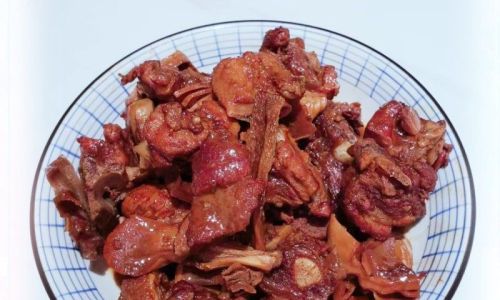
Marination: The Secret to Flavorful Meat
Marinating is not merely a preliminary step—it’s the alchemy that transforms plain pork into a flavor-packed canvas. A well-crafted marinade tenderizes the meat, infuses it with depth, and creates a caramelized crust when seared. The key components of a classic marinade include:
- Soy Sauce: Provides umami and saltiness.
- Rice Wine or Shaoxing Wine: Adds a subtle sweetness and neutralizes gaminess.
- Cornstarch: Acts as a tenderizer and thickener for the sauce.
- Aromatics: Minced garlic, ginger, and shallots layer complexity.
- Sweeteners: Honey, brown sugar, or oyster sauce balance the savory notes.
For a 1.5-pound serving of ribs, combine 3 tablespoons of soy sauce, 1 tablespoon of rice wine, 1 teaspoon of cornstarch, 2 minced garlic cloves, 1 teaspoon of grated ginger, and 1 tablespoon of honey. Marinate the ribs for at least 30 minutes (or up to 4 hours) in the refrigerator. This process allows the meat to absorb the flavors while the cornstarch creates a protective coating.
Preparation: Mise en Place for Success
Stir-frying is a dance of speed and timing, making mise en place (French for “everything in its place”) essential. Before lighting the stove, prepare the following:
- Vegetables: Bell peppers, onions, snap peas, or carrots add color and crunch. Slice them into uniform pieces for even cooking.
- Aromatics: Thinly sliced garlic, ginger, and chili peppers form the flavor base.
- Sauce: Pre-mix a combination of soy sauce, oyster sauce, rice vinegar, and a pinch of sugar. This eliminates guesswork during cooking.
- Garnishes: Fresh cilantro, sesame seeds, or scallions elevate the dish’s presentation.
The Wok: Your Ultimate Tool
A carbon-steel wok is the traditional vessel for stir-frying, thanks to its ability to distribute heat evenly and retain high temperatures. If unavailable, a large cast-iron skillet or stainless-steel pan can substitute. Ensure your cookware is seasoned (for woks) or well-oiled to prevent sticking.
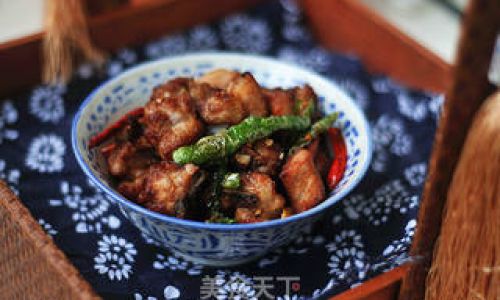
Cooking Process: Step-by-Step Mastery
Heating the Wok
Place your wok over high heat and add 2 tablespoons of oil (peanut, vegetable, or avocado oil work best due to their high smoke points). Allow the oil to shimmer but not smoke—this indicates it’s hot enough to sear the meat without burning.
Stir-Frying the Aromatics
Add the sliced garlic, ginger, and chili peppers to the wok. Stir-fry for 15–20 seconds until fragrant but not browned. This step, known as “blooming,” releases essential oils that form the dish’s aromatic backbone.
Searing the Pork Ribs
Remove the marinated ribs from the refrigerator and gently shake off excess marinade (to prevent steaming). Add the ribs to the wok in a single layer, ensuring each piece contacts the hot surface. Avoid overcrowding the pan, as this lowers the temperature and leads to steaming rather than searing. Cook the ribs for 3–4 minutes per side until golden brown. The high heat caramelizes the marinade, creating a crispy exterior while locking in juices.
Adding Vegetables and Sauce
Once the ribs are seared, push them to one side of the wok and add the prepped vegetables. Stir-fry for 2–3 minutes until tender-crisp. Pour in the pre-mixed sauce and toss everything together. The sauce will thicken rapidly due to the cornstarch in the marinade, coating the ribs and vegetables in a glossy glaze.
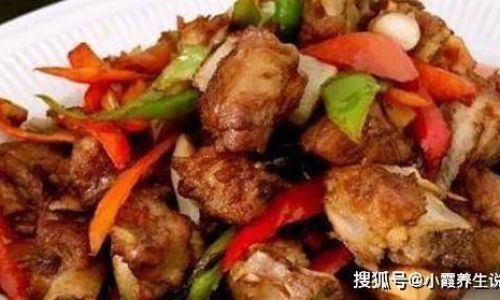
Finishing Touches
For an extra layer of flavor, drizzle a teaspoon of sesame oil over the dish just before removing it from the heat. This step, known as “finishing,” adds a nutty aroma without overpowering the other flavors.
Tips for Perfect Stir-Fried Ribs
- High Heat is Non-Negotiable: Stir-frying requires temperatures between 375–450°F (190–232°C) to sear meat and vegetables quickly. Lower heat results in soggy, greasy food.
- Don’t Overcrowd the Pan: Cook in batches if necessary. Overcrowding lowers the wok’s temperature and causes the meat to steam.
- Marinate Strategically: For tender ribs, avoid acidic marinades (like those with vinegar or citrus) for more than 30 minutes, as they can break down the meat’s proteins excessively.
- Taste and Adjust: Before serving, taste the dish and adjust seasoning with a pinch of salt, a squeeze of lime, or a sprinkle of sugar.
- Rest the Meat: Let the ribs rest for 3–5 minutes after cooking. This allows the juices to redistribute, ensuring moistness.
Variations and Regional Twists
Stir-fried pork ribs are incredibly versatile, adapting to regional palates and dietary preferences:
- Szechuan Style: Add doubanjiang (fermented chili bean paste) and Szechuan peppercorns for a numbing, spicy kick.
- Cantonese Sweet and Sour: Toss the ribs in a mixture of pineapple juice, ketchup, and vinegar after stir-frying.
- Thai Basil: Incorporate Thai basil leaves, fish sauce, and lime zest for a fragrant, herbaceous twist.
- Gluten-Free: Substitute soy sauce with tamari or coconut aminos.
- Vegan: Use marinated king oyster mushrooms or seitan as a meat substitute.
Serving Suggestions
Stir-fried pork ribs pair beautifully with:
- Steamed Jasmine Rice: The fluffy grains soak up the sauce beautifully.
- Egg Noodles: Toss with a drizzle of oil to prevent sticking.
- Lettuce Wraps: Serve the ribs in crisp lettuce cups for a low-carb option.
- Fried Rice: Incorporate leftovers into a next-day fried rice dish.
Health Benefits and Nutritional Notes
While stir-fried pork ribs are indulgent, they offer nutritional benefits when balanced with vegetables:
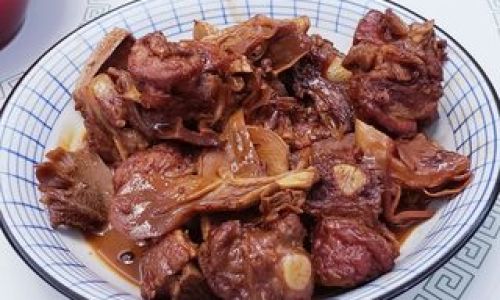
- Protein: A 3-ounce serving of pork provides 22 grams of protein, essential for muscle repair.
- Vitamins: Bell peppers and snap peas deliver vitamin C and fiber.
- Healthy Fats: Using peanut or avocado oil provides monounsaturated fats, which support heart health.
To reduce calorie count, use half the recommended oil and increase vegetable ratios.
Common Mistakes and How to Avoid Them
- Overcooking the Ribs: Pork ribs become dry and tough when cooked beyond 145°F (63°C). Use a meat thermometer for precision.
- Under-Seasoning: Taste your marinade and sauce before cooking. Flavors mellow during cooking, so bold seasoning is key.
- Skipping the Resting Period: Cutting into meat immediately releases juices, leading to dryness.
- Using Low-Quality Oil: Cheap oils with low smoke points (like olive oil) burn at high temperatures, imparting a bitter taste.
Cultural Significance of Stir-Fried Ribs
In many Asian cultures, stir-fried dishes symbolize harmony and togetherness. Pork ribs, often more affordable than other cuts, have long been a staple in family meals and festive celebrations. The act of stir-frying itself—a communal, fast-paced process—reflects the importance of efficiency and flavor in busy households.
Conclusion: The Journey to Wok Hei
Mastering stir-fried pork ribs is a journey toward achieving wok hei, the Cantonese term for the “breath of the wok.” This elusive flavor, imparted by high-heat cooking and caramelized bits of food (known as fond), elevates the dish from ordinary to extraordinary. With practice, patience, and a willingness to embrace the sizzle, you’ll soon create stir-fried ribs that are crispy, tender, and bursting with umami. So grab your wok, heat the flame, and let the dance of flavors begin!



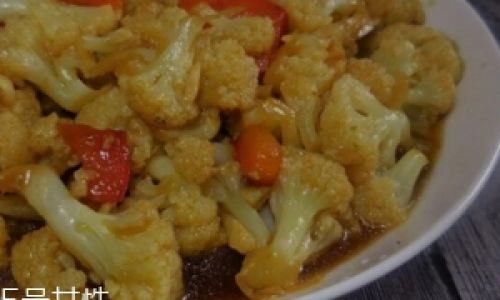
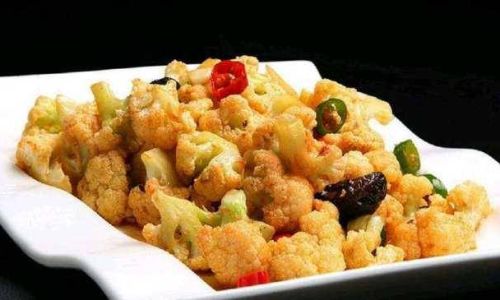
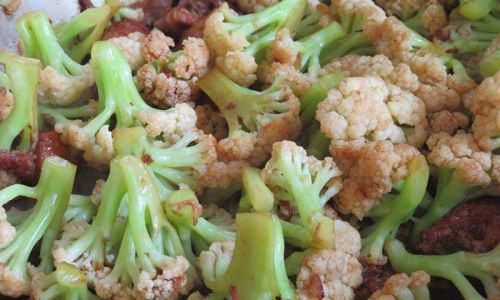
0 comments